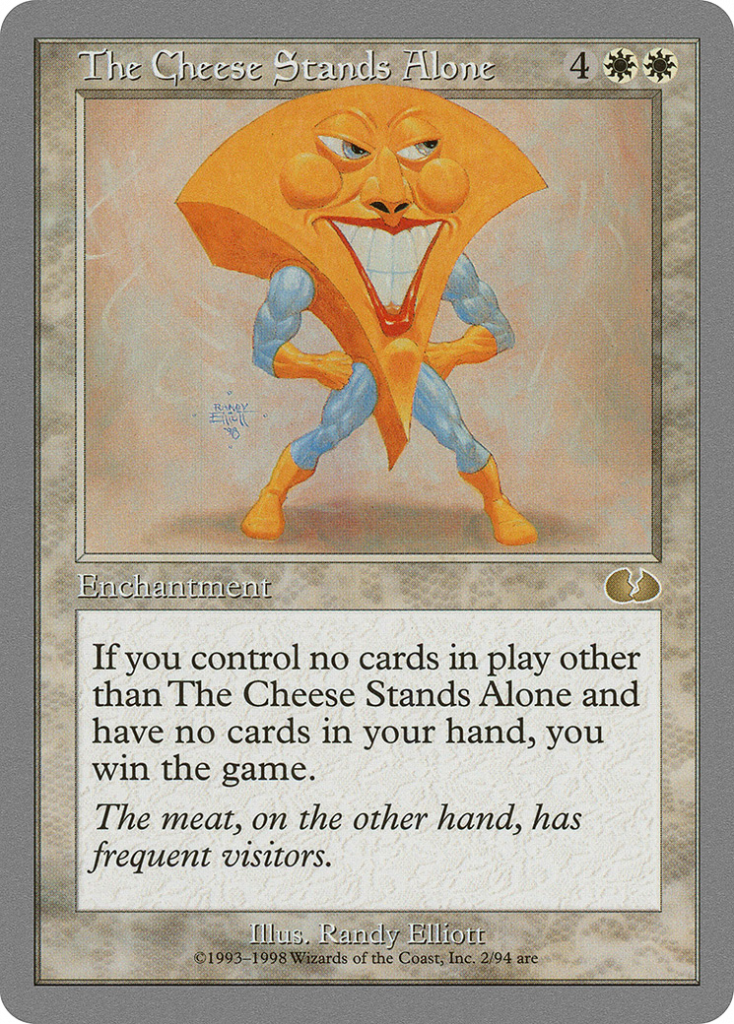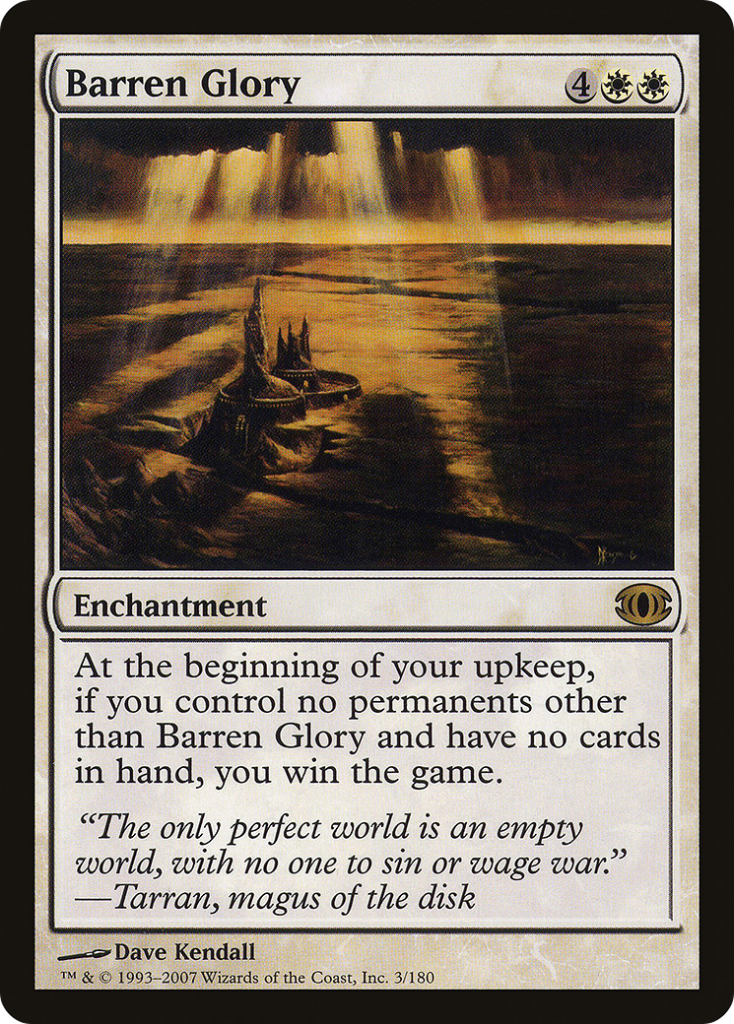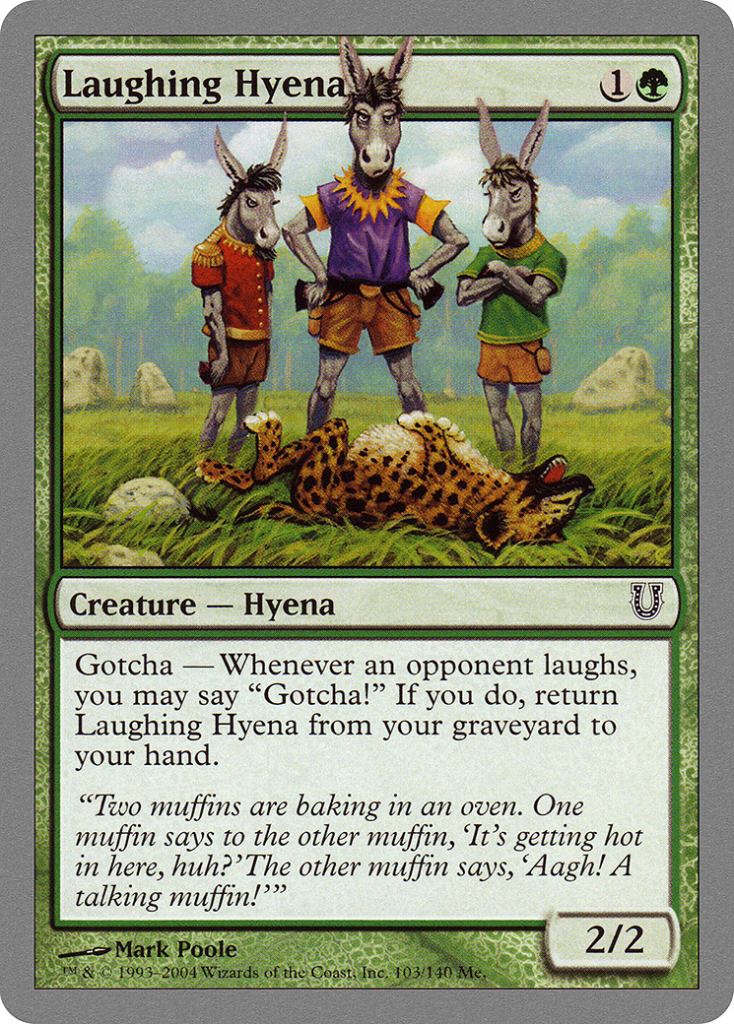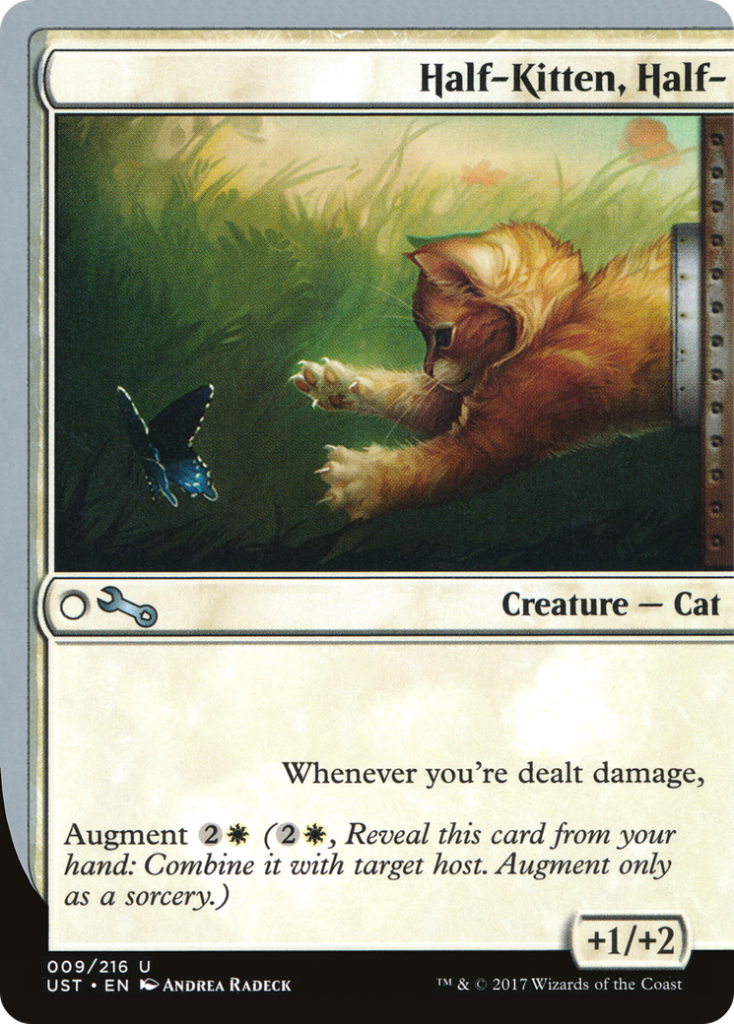In our recent Quarterly Update, I dropped a bit of a teaser for a project we’re working on. I really like the idea of providing a more transparent look into what we’re doing, but based on some feedback I’ve received it appears I could have been a lot clearer when describing what it’s all about.
Rather than waiting until the next Quarterly Update (Sept 30), I’d like to lay out a bit more information about this project, where it came from, and what it is and isn’t. I’ll also address some of the more common questions I’ve received over the past 2 weeks.
At the moment, the Commander card pool consists of all regulation-sized Magic cards publicly released by Wizards of the Coast other than those with silver borders, gold borders, or acorn-shaped security stamps.
This project will not change the legality of any cards with silver borders or acorn-shaped security stamps.
What will it look like?
When we’re done, we’ll have classified all of the silver-bordered and acorn-stamped cards into one of three categories:
- These are fine.
These are cards that could mechanically exist in Magic’s existing rules framework, and could be printed into a black-bordered set. - These could be fine if you’re willing to play along.
These are cards that aren’t fully supported by Magic’s ruleset, but are intuitive, and otherwise non-problematic. - These are not okay
These are cards that would probably be banned in Commander in a hypothetical world where all silver-bordered cards are legal. They represent negative play patterns and interactions that you generally shouldn’t spring on unsuspecting opponents.
Essentially, the result of this project will be a guide to help people navigate the world of silver-bordered cards in Commander.
Where did it come from?
I’ve seen a lot of speculation about our motivations for doing this, so I want to be clear. This project was not forced on us by Mark Rosewater or Wizards of the Coast, and in fact they didn’t know about it until about a week before we started.
This project was my idea, and I started thinking about it about a year ago. Several real people have reached out to me to ask why their silver-bordered cards aren’t legal in Commander, and I’ve heard from some of the more casual-focused folks on the CAG that they’ve heard the same from their communities. I emphasize that they’re real people because I’ve seen a lot of people suggest that nobody was asking for more silver-bordered support, or that silver-bordered cards are universally hated.
Silver-bordered enthusiasts do exist, even if you don’t have any at your LGS. Their arguments generally fall into one of two categories:
- Commander talks a lot about how it wants to be the fun, casual format that doesn’t take itself too seriously;
- Many ideas and mechanics that used to be silver-border are now printed in black-bordered sets, sometimes 1-for-1


When people approach me about silver-bordered cards in Commander, the most common topics are (in no particular order) Host/Augment (and Surgeon General Commander), Acornelia, Krark’s Other Thumb (and other coin flipping/dice rolling cards from Unglued), and Contraptions.
My personal opinion
When people ask me to legalize silver-bordered cards, it reminds me of December 2017, when the then-RC temporarily legalized them for about 6 weeks following the release of Unstable. I was writing articles at the time, and here’s what I wrote about that decision:
The intent of this rule [change] was to generate hype around the first un-set in nearly 15 years. Sheldon Menery explained that the change was motivated by a desire among the Rules Committee members to “allow players to play with cards you can’t (or don’t want to) play in other formats”. (Source) His rationale behind making the change is that it would allow people to try out cards they wouldn’t normally for a defined period of time in order to determine whether or not they wanted to house rule them to be legal within their own playgroups for a longer period of time.
There were two fairly major problems with the way this change was implemented. The first being that Commander is played at large events like GPs, and the announcement caused confusion and outrage towards tournament organizers who had to explain to paying customers their decision to either adhere to or deviate from the official rules of the format of the event they were hosting.
The second was that a similar result could have been accomplished with a slightly lighter touch. Although Commander is often known for its wacky interactions, not everyone who plays Commander enjoys the incredibly unique experience of playing with silver-bordered cards. The negative reaction towards this decision was entirely foreseeable given the community’s collective repulsion towards chaos mechanics. I firmly believe that – given the soapbox that Sheldon and the other members of the Rules Committee have – an article extolling the virtues of playing with un-set cards and a sincere personal recommendation to try it would have been enough. The Rules Committee would be wise to consider the fact that changes to the official rules of the format affect everyone who plays with strangers, no matter how loudly they beat that house-rule-social-contract drum of theirs.
To be clear, I’m one of the folks who doesn’t enjoy the “incredibly unique experience” of playing with silver-bordered cards. The style of humour and quirky gimmicks just never really resonated with me. I’ve gone into it with an open mind, tried it, and determined that it’s not a product for me.
Clarity and communication
Beyond my own personal aversion to the cards themselves, silver-bordered cards as a whole are a bit of a challenge. As of today there are about 800 silver-bordered or acorn stamped cards, including things like Wizards of the Coast Holiday and SDCC promos. These cards exist on a really broad spectrum.

On the one hand, you’ve got card designs that are really obnoxious, especially in a multiplayer setting. These cards can be pretty toxic when you’re trying to cultivate a positive social environment.
On the other hand, there are some really interesting and creative designs. Some of them were so compelling and popular that they formed the foundation for future card designs in tournament-legal sets.

When it comes to silver-bordered cards, it’s not always immediately evident which ones are babies and which ones are bathwater, and when someone asks whether they can play their silver-bordered Commander deck, it’s often met with groans and eye rolls. People (myself included) assume that they’re going to be shot with NERF guns, or have to sing something or high five a stranger.
Short of a PowerPoint presentation, it’s difficult for silver-bordered enthusiasts to quickly communicate the type of experience they’re bringing to the table.
The RC’s role
In April 2024 we updated the Commander Philosophy document to highlight the three pillars of the format. The new document lays out our responsibilities and serves as a roadmap for us. At its core, Commander is Social:
Each game is a journey the players share, where every player is considerate of the experiences of everyone involved. Magic is a competition in the same sense that all games are competitions, but whenever the act of competing comes into conflict with a social atmosphere, Commander prioritizes and protects the social atmosphere. Format management decisions are intended to:
- Encourage positive, communal experiences where people can bond over the shared experience of gaming
- Help players communicate their preferences and arrive at a shared set of expectations
When I think about the folks who want to play Acornelia or Surgeon General Commander, I don’t see a problem that’s solved by a blanket legality change that shoehorns silver-bordered cards into the format. Rather, I see a communication problem that could be alleviated by useful shared language, and that’s really what’s at the core of this Silver-Bordered Project.
We already use heuristics like this in the Commander community in a number of ways. You generally don’t have to describe your deck card-by-card if you say you’re playing cEDH, or playing stax, or playing elfball. The terms themselves carry enough information that your opponents can make a quick, informed decision about the type of experience they’re signing up for.
I’ll consider it a success if the working group is able to come up with a manageable number of snappy, descriptive names to describe the groups of cards that I see in the silver-bordered cardpool. If the names actually catch on and start seeing regular use within the community, there may even be other applications for this type of framework that can help to alleviate other clunky aspects of pregame discussions.
Q&A
Q: Why start with silver-bordered cards and not something more broadly applicable?
A: We’re relatively new to working group projects like this. I wanted the problem statement to be something with relatively defined edges, and one that had some personal significance to the folks who are working on it. This also is not the only thing we’re working on at the moment, but I can’t always share the details of our other projects.
Q: Will I have to play against more silver-bordered cards as a result of this?
A: It’s possible that more folks might try out silver-bordered cards if there’s a reasonable chance they might get to play them. The default position is still that these cards are not legal, so if these cards are not your vibe you do not have to opt-in to playing with them.
Q: Will [specific card] be considered [specific category]?
A: The classification work is currently underway and we plan on sharing the results with the Duskmourn quarterly format update on September 30.
Q: Are you looking at Mystery Booster/Unknown Event playtest cards as part of this project?
A: No.
Q: Are you looking at Acorn-stamped Mystery Booster cards?
A: There are only 7 of these. They weren’t part of our initial analysis because we didn’t know about them until after we started, but we’ll be adding them to the list and they’ll be part of the project.